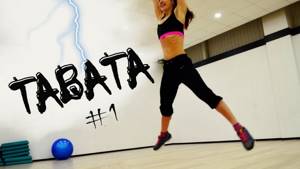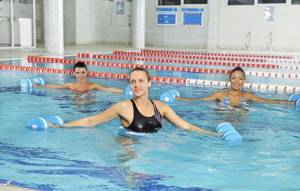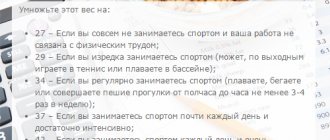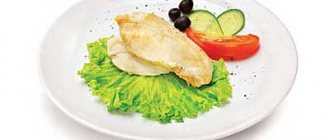As practice shows, the amount of energy required for physical exercise depends on many factors. What matters here is a person’s gender, weight, age, physical activity, and lifestyle. After all, you can lose 500 kcal during a workout, but due to poor nutrition, you will gain back twice as much. In this case, noticeable weight loss will not be observed. To speed up the metabolic process, when the most fat is lost, you need to know exactly what exercises to do and what sports to play.
Briefly about what calorie content is and why it is needed for humans
Calorie content is the energy value of food with which energy enters the body after it is fully absorbed. We can talk about the calorie content of a product when we talk about how much protein, fat and carbohydrates are in one hundred grams of a dish. For almost 100 years, humanity has attached great importance to the word “calorie” in the field of nutrition, although previously, until the beginning of the 20th century, they were known simply as the heat emitted by an object. Today, almost every girl, and even men, calculate the calorie content of their dishes in order to not to gain extra pounds, but on the contrary, to lose them by removing excess fat from the hips, buttocks, waist, and sides. Some people need calories to gain weight (this usually applies to athletes who play professional sports).
The human body spends energy on:
- movement;
- thinking;
- breath;
- pumping blood;
- delivery of nutrients and oxygen to body cells.
A person receives energy regularly from food.
A person receives energy regularly from food. The more he eats, the more energy he will receive. Each product contains 4 kcal in proteins and carbohydrates, and 9 in fats. The body receives calories after the dish is absorbed through the gastrointestinal tract. For example, one hundred grams of oatmeal contains 6 grams of fat, 51 grams of carbohydrates, and 12 grams of protein. Multiplying by the calorie content of each component, one can obtain that one hundred grams of oatmeal will contain 4*51+4*12+9*6=306 kcal. This is exactly how much the body needs to convert carbohydrates into glucose, fats into glycerol, and protein into amino acids.
Thanks to amino acids, the body acquires new building material for cells and muscle fibers. Glucose nourishes cells, especially the brain. If you eat too many carbohydrates, excess glucose will be stored in the muscles, making them flabby. Fat is needed so that the body has fuel for vital processes. Some part is processed into cholesterol.
Important! Excess fat consumed with food is not removed from the body, but settles on the sides, buttocks, hips and waist, which girls then struggle with stubbornly.
If you are following a diet to increase body weight, then during the day you need to consume:
- 25-30 percent protein;
- 40-45 percent carbohydrates;
- 30-35 percent fat.
If a girl goes on a diet to reduce body weight, then the numbers will be like this:
- up to 30 percent protein;
- up to 50 percent carbohydrates;
- up to 20 percent fat.
Important! There are 1000 calories in one kilocalorie. This should be remembered because often the manufacturer omits these three zeros when indicating the energy value of the product in calories, although in fact they mean kilocalories.
How calories are burned with a quiet lifestyle

How many calories do you need to burn per day to lose weight?
In a state of calm
In a state of calm, the body still spends a certain amount of calories. Therefore, even without doing anything, you need to eat, otherwise the body may become exhausted. There is a formula that helps you understand how many calories each person needs at rest. Here you will need to know your body weight in kilograms, height in centimeters, age in years. Let our woman weigh 65 kilograms, have a height of 168 centimeters and her age reach 38 years. Then you get the following figure:
655+9,6*65+1,8*168-4,7*38=655+624+302,4-178,6=1402,8.
This is exactly how many kilocalories per day, as the calculator shows, you need to eat so that the body can burn all the energy received. If the question is about losing weight, then you need to consume less high-calorie foods or engage in physical exercise.
How many calories per hour does it take to train?
How many calories do you need to burn per workout to get the weight loss effect? There are different types of exercises and physical activity. For example, with interval training, up to 900 kcal are consumed per hour of training. Moreover, even after 15 minutes of exercise, the body will use fat reserves to recover if the person’s nutrition is correct.
How many calories are burned when climbing stairs?
Cardio training burns from 500 to 800 kcal. It’s just important to remember that you need to exercise for at least an hour, since fat reserves will begin to melt only after 20 or 30 minutes of exercise. Endurance plays a big role here.
Important! The more resilient your body is, the more fat you can burn.
How many calories are burned during different exercises in the gym?
If you decide that you need a healthy lifestyle like air, so that your figure becomes slim and beautiful again, your muscles become stronger and more elastic, and your breathing becomes free and without shortness of breath, then you urgently need to head to the gym to burn extra calories.
For beginners, the body is not accustomed to training in gyms, so at first it will consume more calories than a trained person. But this does not mean that from the first minutes you need to start with intense training with a barbell, despite the fact that the effect of bodybuilding is higher than that of cardio exercises.
In our article you will find tables with average data on calorie consumption for various physical activities in the gym.
In order not to harm your health, you need to start with a small weight. In addition, any physical activity should be accompanied by positive emotions, i.e. it should bring physical and mental satisfaction. Then reserve fats and glycogen begin to burn, since with positive emotions catecholamines are released, accelerating the burning of fat cells and the removal of fat from the body.
For fitness activities, you should not wear clothes that do not allow air to pass through to increase sweating. Sweat will not replace fat loss, especially since moisture will return back to the body with the next portion of water.
Calorie consumption during training
How many calories are in 1 kg of fat?
Each type of workout takes its own amount of calories. It is important to know how many calories are burned in one workout. It is worth paying attention to the following types of exercises:
- yoga. How many calories does yoga burn? The indicators are very individual and relative, but on average it takes up to 250-400 kcal. The type of yoga a person practices also matters. You shouldn't do these exercises just for the sake of losing weight. Yoga is needed to keep the body in good shape;
- Abdominal pumping takes away 4-8 kilocalories per kilogram of weight. It turns out that in 15 minutes you can lose 140 kcal if you weigh 70 kilograms;
- Tabata. You need to exercise for 20 seconds, then rest for 10 seconds. In total, an intense workout should not be longer than 5 minutes. During this time, up to 55 kcal is burned. Moreover, metabolism improves 15 times, burning fat even at rest and sleep;

Tabata
- strength training, when lifting weights, helps burn from 200 to 400 kcal per hour;
- Hula Hup. If you spin a hula hoop for 10 minutes, you can lose 50 kcal. But a beginner will not be able to exercise for more than 15 minutes, since his back gets tired from unaccustomed use, and his legs also swell;
- Burpees. Or squat, bench press, arm press, jump. This exercise burns up to 1200 kcal per hour of exercise. At an intensity of seven times per minute;
- roller skating. With a weight of 55 kilograms, 110 kcal will be consumed in 10 minutes, and 660 in an hour;
- ellipse. You need to exercise on the ellipsoid for an hour, since fat burning begins only after half an hour of work. Depending on the speed, it takes from 300 to 700 kcal;
- riding a scooter. When riding a scooter, calorie consumption is 55 kcal in 10 minutes with a weight of 55 kilograms, 330 in an hour;
- exercise bike. You can burn from 500 to 700 kcal in an hour. This has to do with how intensely a person will train;
- aerobics. In 50 minutes, with a weight of 65 kilograms, 282 kcal will be consumed;
- water aerobics. It takes approximately 680-700 kilocalories per hour;

Water aerobics - when doing pull-ups on the horizontal bar. From 250 to 550 kilocalories are burned;
- bodyflex. Breathing exercises take up to 650 kcal per hour and 108 in 10 minutes if a person weighs 65 kilograms;
- various dances help burn up to 200 kilocalories in half an hour;
- when jumping on a trampoline. In 10 minutes you can burn 42 kilocalories;
- stretching. If it lasts only ten minutes, then you can burn only 20 kcal;
- badminton. When exercising for an hour, you can lose 250 kcal;
- Pilates. By exercising for an hour, the body should lose up to 250 kcal;
- football. During this game you can lose up to 450 kcal within an hour;
- oxysize. Approximately 150 kcal in half an hour can be lost with intense exercise;
- Zumba Allows you to lose 80 kcal in 10 minutes, and 480 in an hour of exercise;
- stretching Stretching helps remove up to 200 kilocalories per hour of exercise.

Stretching
The numbers depend on weight, metabolic rate and age. Therefore, it is difficult to give universal data on how many calories to burn during a workout.
What is the difference between the EPOC effect of high intensity strength training versus regular strength training?
A team of researchers led by Paoli (2012) studied how high-intensity strength training and traditional strength training would affect the EPOC effect. That study involved 17 men aged 28, each with 4 to 6 years of strength training experience.
Throughout the day, participants continued to eat the same meals and maintained their daily activity levels. After 22 hours, the men returned to the laboratory, where the scientists measured how many extra calories they "burned" after the workout.
Traditional strength training consisted of 8 exercises: flat bench press, lat pull-down, military press, biceps curl, tricep extension, leg press, machine leg curl, and sit-ups for the abdominal muscles. Each exercise was performed in 4 sets of 8-12 repetitions (70-75% of 1RM) until muscle failure was achieved, with one minute of rest between sets for single-joint exercises and two minutes of rest for multi-joint exercises. Together with a 10-minute warm-up on the treadmill, this workout lasted an average of 62 minutes .
The high-intensity strength training consisted of 3 exercises: bench press, leg press and lat pull-down, which were performed in a specific style. In the first set, participants performed the exercise to failure with a weight that they could lift 6 times, but no more. This was followed by 20 seconds of rest and the same weight was again lifted to failure, which corresponded to approximately 2-3 repetitions; after another 20 seconds of rest, the participants once again performed a set with the same weight until failure for 2-3 repetitions. With a rest of 2.5 minutes after each circuit, participants completed 2 such circuits for bench presses and vertical rows and 3 circuits for leg presses. Including a 10-minute warm-up on the treadmill, the workout lasted about 32 minutes .
The results showed that in the 22 hours after traditional strength training, compared to rest, energy expenditure increased by 5% , which translated into an additional 99 kcal.
At the same time , after a high-intensity strength training over a period of 22 hours, energy expenditure increased by as much as 23% compared to the resting state - after a high-intensity training, 452 additional kcal were consumed . It is noted that to cover the additional energy needs of the body (the EPOC effect), fat was mainly used as a fuel source.
IMPORTANT! As a result, during a more measured exercise “for later”, fewer calories are set aside for the EPOC effect for “afterburning” - only 99 kcal. And during a high-intensity workout, the body simply does not have time to consume enough oxygen for “afterburning,” so after the workout it burns more calories - an average of 452 kcal.
However, the overall result for both workouts is that the body spends approximately the same amount of calories: it’s just that in the first case, most of it is burned during the workout itself .











